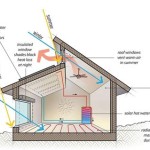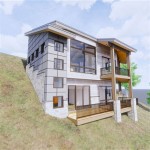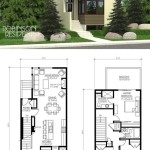One-level house plans, also known as single-story house plans, are architectural designs for homes that reside entirely on a single floor. These plans eliminate the need for stairs or elevators, making them particularly suitable for individuals with mobility concerns, seniors, or families with young children.
One-level house plans offer numerous advantages. They provide easy access to all areas of the home, fostering a sense of convenience and independence. Additionally, they eliminate the risk of falls associated with navigating stairs. The seamless flow between rooms and outdoor spaces promotes efficient living and creates a cohesive ambiance.
In the following sections, we will delve deeper into the benefits, considerations, and various designs of one-level house plans. We will explore how these plans cater to diverse needs, enhance accessibility, and contribute to an improved quality of life.
One-level house plans offer numerous advantages, including:
- Enhanced accessibility
- Eliminated fall risks
- Convenient single-floor living
- Improved mobility for all ages
- Efficient use of space
- Cohesive indoor-outdoor flow
- Reduced maintenance costs
- Increased energy efficiency
These plans are particularly suitable for individuals with mobility concerns, seniors, families with young children, and those seeking a low-maintenance and convenient living environment.
Enhanced accessibility
One-level house plans provide unparalleled accessibility, eliminating the challenges associated with stairs and steps. This is particularly beneficial for individuals with mobility impairments, seniors, and families with young children.
- Eliminated fall risks
Stairs are a major cause of falls, especially among seniors. One-level house plans remove this hazard, creating a safer living environment for all occupants.
- Improved mobility for all ages
Single-story homes allow individuals of all ages and abilities to move around the house with ease. This is especially important for individuals with mobility aids, such as wheelchairs or walkers.
- Convenient single-floor living
With everything on one level, there is no need to navigate stairs to access different areas of the home. This provides convenience and independence, fostering a sense of well-being and autonomy.
- Cohesive indoor-outdoor flow
One-level house plans often feature open floor plans and large windows that connect the indoor and outdoor spaces. This seamless flow enhances accessibility to outdoor areas, such as patios, gardens, and pools.
Overall, the enhanced accessibility of one-level house plans promotes independence, safety, and comfort for individuals of all ages and abilities.
Eliminated fall risks
Falls are a major public health concern, especially among older adults. According to the Centers for Disease Control and Prevention (CDC), falls are the leading cause of injury-related deaths among adults aged 65 and older. Stairs are a significant fall hazard in homes, accounting for a large proportion of fall-related injuries and fatalities.
One-level house plans eliminate the risk of falls associated with stairs. With everything on a single floor, there is no need to navigate stairs to access different areas of the home. This is especially beneficial for individuals with mobility impairments, seniors, and families with young children.
For individuals with mobility impairments, such as those using wheelchairs or walkers, stairs can pose a significant barrier to accessing different levels of a home. One-level house plans provide a safe and accessible living environment, allowing individuals to move around the home with ease and independence.
Seniors are also at an increased risk of falls due to age-related changes in balance, coordination, and muscle strength. One-level house plans can help to reduce the risk of falls by eliminating the need to navigate stairs, which can be especially dangerous for seniors with impaired mobility or balance issues.
Convenient single-floor living
One-level house plans offer the convenience of single-floor living, eliminating the need to navigate stairs to access different areas of the home. This provides numerous benefits, including:
Accessibility for all
Single-floor living is particularly beneficial for individuals with mobility impairments, seniors, and families with young children. Without stairs to climb, individuals can move around the home with ease and independence, fostering a sense of well-being and autonomy.
Efficient use of space
One-level house plans promote efficient use of space by eliminating the need for stairwells and hallways that connect multiple floors. This allows for more usable living space and can reduce construction costs compared to multi-level homes.
Improved flow and functionality
Single-floor living enables a more efficient and functional flow of daily activities. With everything on one level, there is no need to waste time or energy going up and down stairs. This can be especially beneficial for families with young children or individuals with busy schedules who need to maximize their time.
Reduced maintenance and cleaning
One-level house plans typically require less maintenance and cleaning compared to multi-level homes. With no stairs to clean or maintain, there is less wear and tear on the home’s surfaces and components. This can lead to reduced maintenance costs and a cleaner, more organized living environment.
Overall, the convenience of single-floor living provided by one-level house plans enhances accessibility, promotes efficient use of space, improves functionality, and reduces maintenance, contributing to a more comfortable and enjoyable living experience.
Improved mobility for all ages
Enhanced accessibility for individuals with mobility impairments
One-level house plans provide unparalleled mobility for individuals with mobility impairments. Without stairs or steps to navigate, individuals using wheelchairs, walkers, or other mobility aids can move around the home with ease and independence. This enhances their quality of life and allows them to participate fully in all aspects of daily living.
Safe and accessible environment for seniors
Seniors often experience age-related decline in mobility and balance, making stairs a significant fall hazard. One-level house plans eliminate this risk, creating a safe and accessible environment for seniors to age in place. With everything on one floor, seniors can move around their homes with confidence and maintain their independence.
Convenient and comfortable living for families with young children
One-level house plans are also ideal for families with young children. Toddlers and young children are naturally curious and active, but stairs can pose a safety hazard. Single-story homes provide a safe and convenient environment for children to play and explore without the worry of falls or accidents.
Improved overall health and well-being
Improved mobility can lead to numerous health and well-being benefits for individuals of all ages. Regular movement and activity can strengthen muscles, improve cardiovascular health, and reduce the risk of chronic diseases. One-level house plans encourage active living by making it easier for individuals to move around their homes and engage in physical activities.
In conclusion, one-level house plans offer significant advantages in terms of improved mobility for all ages. By eliminating stairs and steps, these plans create a safe, accessible, and convenient living environment that promotes independence, well-being, and an enhanced quality of life.
Efficient use of space
One-level house plans promote efficient use of space by eliminating the need for stairwells and hallways that connect multiple floors. This allows for more usable living space and can reduce construction costs compared to multi-level homes.
- Eliminated stairwells and hallways
Stairwells and hallways are necessary in multi-level homes to connect different floors. However, they take up valuable square footage that could be used for living space. One-level house plans eliminate this wasted space, allowing for more efficient use of the available square footage.
- Open floor plans
One-level house plans often feature open floor plans, where multiple functional areas flow into each other without walls or partitions. This creates a more spacious and airy feel, while also allowing for better use of natural light. Open floor plans are particularly beneficial for small homes, as they make the space feel larger and more inviting.
- Multi-purpose rooms
One-level house plans often incorporate multi-purpose rooms that can serve multiple functions. For example, a room could be designed to be used as both a guest room and a home office. This flexibility allows homeowners to make the most of their available space and adapt the home to their changing needs.
- Reduced wasted space
By eliminating stairs, hallways, and other non-essential spaces, one-level house plans minimize wasted space. This results in a more efficient and functional use of the available square footage, creating a home that feels both spacious and comfortable.
Overall, the efficient use of space in one-level house plans allows for more usable living space, reduced construction costs, and a more comfortable and functional living environment.
Cohesive indoor-outdoor flow
One-level house plans often feature a cohesive indoor-outdoor flow, seamlessly connecting the interior and exterior spaces of the home. This integration creates a more spacious and inviting living environment, allowing occupants to enjoy the benefits of both indoor and outdoor living.
Expansive windows and doors
One-level house plans often incorporate large windows and doors that span from floor to ceiling, blurring the boundaries between the indoors and outdoors. These expansive openings allow for ample natural light to flood the interior spaces, creating a brighter and more cheerful ambiance. Additionally, they provide stunning views of the surrounding landscape, bringing the beauty of nature into the home.
Outdoor living areas
Many one-level house plans include dedicated outdoor living areas, such as patios, decks, or verandas. These spaces extend the living area beyond the walls of the home, providing a seamless transition between indoor and outdoor activities. Outdoor living areas can be used for dining, entertaining, relaxing, or simply enjoying the fresh air and sunshine.
Indoor-outdoor connection
The cohesive indoor-outdoor flow in one-level house plans is further enhanced by the use of similar materials and finishes both inside and outside the home. For example, the flooring in the interior living spaces may extend onto the outdoor patio, creating a sense of continuity between the two areas. Additionally, outdoor furniture and dcor can be chosen to complement the interior design, further blurring the lines between the indoors and outdoors.
Overall, the cohesive indoor-outdoor flow in one-level house plans creates a more spacious, inviting, and connected living environment, allowing occupants to fully enjoy the benefits of both indoor and outdoor living.
Reduced maintenance costs
One-level house plans offer reduced maintenance costs compared to multi-level homes, providing homeowners with significant long-term savings.
- Eliminated exterior maintenance of multiple stories
Multi-level homes require maintenance and repairs for multiple exterior surfaces, including walls, roofs, gutters, and siding. One-level house plans eliminate the need to maintain and repair exterior surfaces on higher levels, reducing maintenance costs and the need for specialized equipment or contractors.
- Reduced roof maintenance
One-level homes have smaller roof areas compared to multi-level homes. This reduced roof area requires less maintenance, repairs, and potential replacements, resulting in lower roofing costs over the life of the home.
- Simplified landscaping and yard maintenance
One-level homes often have smaller yards and simpler landscaping compared to multi-level homes with multiple levels of gardens or outdoor spaces. This reduced outdoor area requires less maintenance, such as mowing, trimming, and watering, saving time and money for homeowners.
- Improved energy efficiency
One-level homes are generally more energy efficient than multi-level homes due to reduced heat loss through multiple floors. This improved energy efficiency can lead to lower energy bills and reduced maintenance costs associated with heating and cooling systems.
Overall, the reduced maintenance costs of one-level house plans contribute to lower overall homeownership expenses, providing homeowners with financial savings and peace of mind.
Increased energy efficiency
One-level house plans offer increased energy efficiency compared to multi-level homes, resulting in lower energy bills and reduced environmental impact.
- Reduced heat loss through multiple floors
In multi-level homes, heat can escape through multiple floors, leading to higher energy consumption for heating. One-level house plans eliminate this issue, as there are no upper floors to lose heat to. This improved thermal performance reduces the demand on heating systems, resulting in lower energy bills and a more comfortable indoor temperature.
- Improved insulation and air sealing
One-level house plans are typically easier to insulate and air seal than multi-level homes due to their simpler. This reduced air leakage prevents heat loss and improves the overall energy efficiency of the home. Proper insulation and air sealing also help maintain a consistent indoor temperature, reducing the need for excessive heating or cooling.
- Smaller surface area to volume ratio
Multi-level homes have a larger surface area to volume ratio compared to one-level homes. This means that multi-level homes have more exterior walls and windows relative to their volume, which can lead to increased heat loss. One-level homes have a smaller surface area to volume ratio, resulting in reduced heat loss and improved energy efficiency.
- Passive solar design principles
One-level house plans can be designed to incorporate passive solar design principles, which utilize the sun’s energy for heating and lighting. This can be achieved through the use of large south-facing windows, thermal mass, and proper insulation. Passive solar design can significantly reduce the demand on heating systems, leading to even greater energy savings.
Overall, the increased energy efficiency of one-level house plans contributes to lower energy bills, a more comfortable indoor environment, and a reduced carbon footprint.










Related Posts








